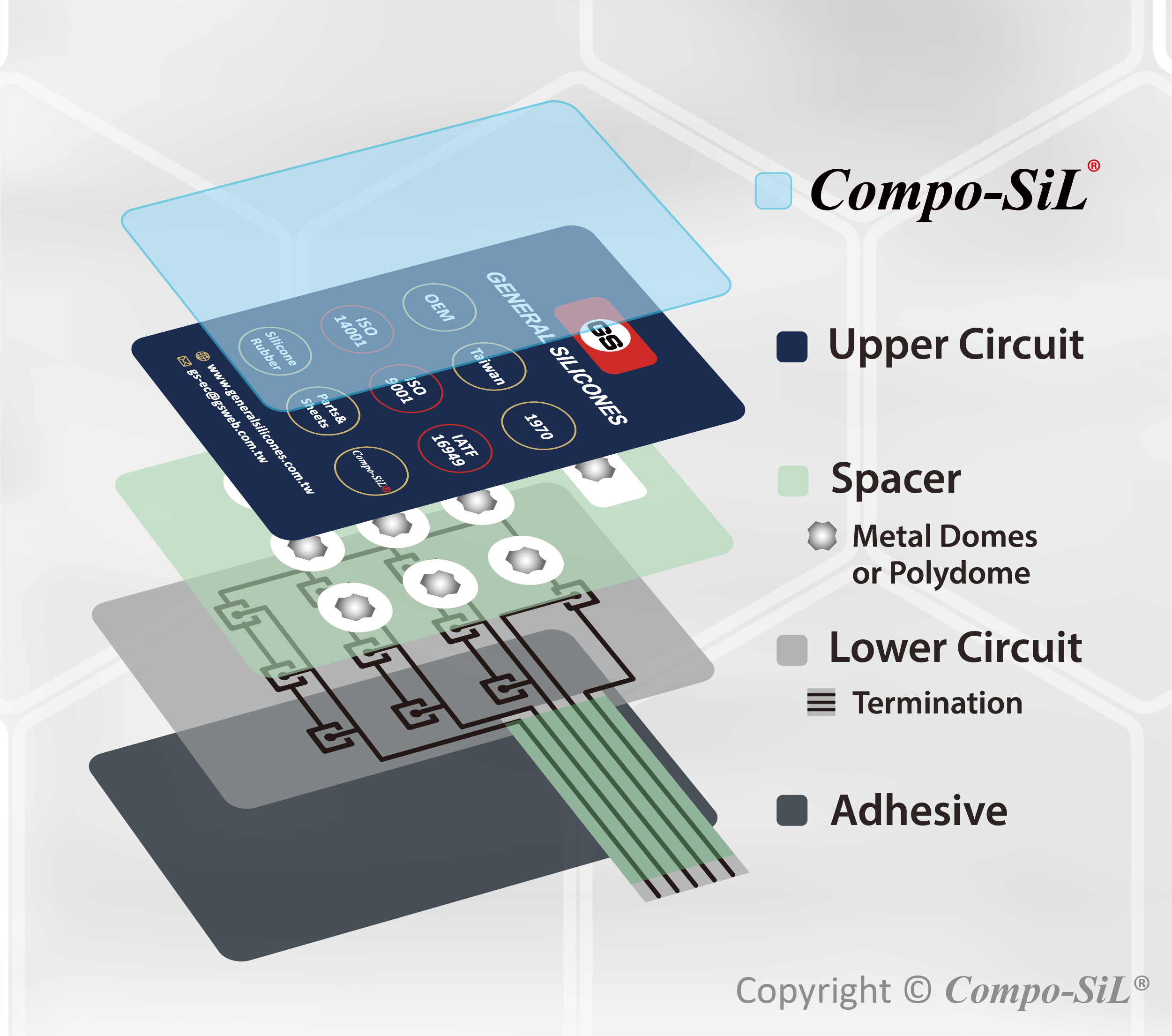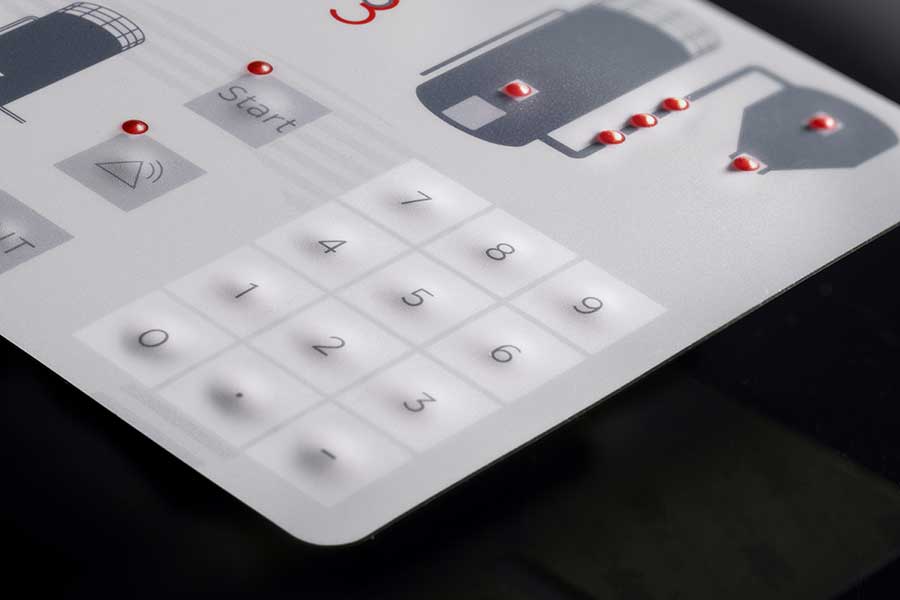Exploring the Future of Membrane Switches in Emerging Technologies
Exploring the Future of Membrane Switches in Emerging Technologies
Blog Article
Understanding the Value of Membrane Switches in User User Interfaces
Membrane buttons are essential parts in the style of effective individual interfaces, helping with not just functionality yet also boosting aesthetic allure and user communication. Their unique functions, such as resistance to environmental aspects and customizable styles, make them appropriate for a varied array of applications throughout numerous industries. As we check out the various advantages and future fads connected with Membrane innovation, it comes to be clear that these switches are a lot more than simply components; they stand for a merging of advancement and usefulness. The effects of this modern technology on individual experience deserve taking a look at better.
What Are Membrane Buttons?

The spacer layer, which has glue buildings, enables the separation of the circuit layer from the overlay, ensuring that the button continues to be in a non-activated state up until pressed. When stress is used to the overlay, it compresses the spacer layer, linking the space and completing the circuit in the underlying layer. This design not just decreases the physical space needed for conventional mechanical switches yet likewise enhances the longevity of the gadget, as Membrane switches are generally immune to dust, dampness, and other ecological aspects.
Typically located in applications ranging from customer electronic devices to medical gadgets, Membrane buttons are integral to modern-day technology, giving a effective and straightforward user interface that aligns with modern design demands.
Advantages of Membrane Buttons
While various button technologies exist, Membrane Switches offer unique benefits that make them particularly preferable in numerous applications. One of the main advantages of Membrane buttons is their portable design, which enables for space-saving executions in tools where property is restricted. Their slim profile not only improves visual appeal however additionally facilitates lightweight building and construction.
Another considerable benefit is their resistance to ecological factors. Membrane switches are commonly sealed against wetness, dirt, and impurities, making them ideal for use popular atmospheres, such as clinical tools and industrial equipment. This sturdiness prolongs the life-span of the button, reducing maintenance costs and improving dependability.
Additionally, Membrane buttons can be tailored to fulfill details layout requirements, incorporating unique graphics and colors that enhance user interaction. Their tactile feedback options can also be customized to provide a satisfying user experience. Additionally, Membrane buttons are cost-efficient, specifically in high-volume applications, as they can be generated effectively.
Applications in Various Industries

In the consumer electronic devices industry, Membrane switches are prevalent in tools such as microwaves, washing equipments, and push-button controls. Their tactile responses and aesthetic alternatives enhance customer experience while offering a sleek, contemporary look. Furthermore, automotive suppliers utilize Membrane switches in control panel controls and infomercial systems, where area is restricted, and individual involvement is vital.
In addition, the industrial field leverages Membrane switches in control panels for equipment and equipment, permitting for intuitive operation in usually severe settings. Their resistance to chemicals and moisture makes sure longevity and dependability in these applications. On the whole, the adaptability of Membrane Switches adds significantly to their extensive usage, making them indispensable in different technical domain names.
Design Considerations for Membrane Buttons

When making Membrane switches, several essential factors to consider should important link be thought about to make certain optimum functionality and user experience. The selection of products is essential; picking sturdy, high-quality substratums can boost the button's long life and resistance to environmental factors such as dampness and temperature level variations.
Second of all, the style of the graphic overlay ought to prioritize clarity and convenience of usage. Symbols and text must be legible, and the format needs to assist in user-friendly interaction (membrane switches). Additionally, responsive comments is necessary; integrating a tactile dome or various other systems can enhance the customer experience by supplying physical confirmation of activation
Another vital aspect is the switch's electric efficiency. Designers have to make sure that the conductive traces are correctly designed to lessen resistance and prevent signal disturbance. This includes evaluating the called for actuation force and ensuring compatibility with the digital components they will certainly interface with.

Future Patterns in Membrane Innovation
As modern technology remains to breakthrough, Membrane switches are positioned to develop dramatically, driven by developments in products and manufacturing methods. One arising trend is the consolidation of innovative materials, such as conductive inks and versatile substratums, which boost durability and minimize the total weight of Membrane switches. These materials not just boost the tactile reaction however additionally enable the style of buttons that can hold up against harsher environmental conditions.
Moreover, the assimilation of touch-sensitive modern technologies is transforming conventional Membrane Switches right into even more interactive interface. Capacitive touch sensors embedded within Membrane switch panels can offer a much more instinctive and receptive user experience, aligning with the growing demand for sleek, contemporary styles in consumer electronics.
Furthermore, improvements in printing strategies, such as electronic and 3D printing, make it possible for quick prototyping and customization of Membrane buttons. This adaptability permits suppliers site here to react extra promptly to market needs and customer choices.
Finally, sustainability is ending up being a considerable focus, with manufacturers exploring eco-friendly materials and procedures. As these fads unravel, the future of Membrane technology promises boosted capability, aesthetic appeal, and environmental duty, strengthening their function in advanced user interfaces throughout different markets.
Conclusion
Finally, Membrane Switches stand for an essential element in the design of interface, incorporating performance with aesthetic adaptability. Their advantages, including longevity and resistance to ecological elements, make them ideal for diverse applications throughout different industries. In addition, thoughtful style considerations boost user communication and experience. As developments in modern technology continue, the evolution of Membrane buttons is expected to more fine-tune customer interfaces, driving advancement and improving functionality in an increasingly complicated technological landscape.
Membrane switches are important visite site parts in the design of effective individual interfaces, promoting not only performance yet additionally enhancing aesthetic charm and customer communication.Membrane Switches serve as an important part in numerous user interfaces, helping with a seamless communication in between customers and digital tools.While numerous switch innovations exist, Membrane Switches offer unique benefits that make them specifically preferable in numerous applications.In addition, Membrane buttons can be customized to meet specific design requirements, incorporating distinct graphics and colors that enhance user interaction.In conclusion, Membrane Switches stand for an essential part in the layout of customer interfaces, incorporating capability with visual adaptability.
Report this page